-
 Bitcoin
Bitcoin $106,077.7663
-2.62% -
 Ethereum
Ethereum $2,644.4634
-6.15% -
 Tether USDt
Tether USDt $1.0002
0.01% -
 XRP
XRP $2.1872
-4.65% -
 BNB
BNB $653.9698
-2.13% -
 Solana
Solana $153.1055
-6.13% -
 USDC
USDC $0.9995
-0.02% -
 Dogecoin
Dogecoin $0.1816
-7.39% -
 TRON
TRON $0.2711
-2.62% -
 Cardano
Cardano $0.6627
-6.02% -
 Hyperliquid
Hyperliquid $41.2391
-2.26% -
 Sui
Sui $3.2151
-6.48% -
 Chainlink
Chainlink $13.9480
-8.21% -
 Avalanche
Avalanche $20.3371
-6.68% -
 Bitcoin Cash
Bitcoin Cash $426.8582
0.05% -
 Stellar
Stellar $0.2690
-3.73% -
 UNUS SED LEO
UNUS SED LEO $8.8698
-1.89% -
 Toncoin
Toncoin $3.0810
-5.36% -
 Shiba Inu
Shiba Inu $0.0...01223
-7.14% -
 Hedera
Hedera $0.1640
-6.34% -
 Litecoin
Litecoin $86.5702
-6.14% -
 Polkadot
Polkadot $3.9430
-6.93% -
 Ethena USDe
Ethena USDe $1.0004
-0.03% -
 Monero
Monero $316.4579
-4.76% -
 Bitget Token
Bitget Token $4.6091
-4.34% -
 Dai
Dai $1.0001
0.02% -
 Pepe
Pepe $0.0...01157
-8.95% -
 Uniswap
Uniswap $7.6778
-4.82% -
 Pi
Pi $0.6144
-3.05% -
 Aave
Aave $290.2271
-5.59%
How many steps does Coinbase's account level verification take? What materials are required for high-level limits?
Coinbase requires users to complete a multi-step verification process, including ID upload, selfie confirmation, and proof of address, to unlock higher transaction limits and ensure regulatory compliance.
Jun 10, 2025 at 10:49 pm

Understanding Coinbase's Account Verification Process
Coinbase, one of the most popular cryptocurrency exchanges globally, requires users to go through a multi-step verification process to ensure compliance with regulatory standards and to enhance account security. The account level verification on Coinbase is designed to progressively unlock higher transaction limits based on the user’s identity confirmation and document submission.
The system categorizes users into different verification tiers, each allowing for increased buying, selling, and withdrawal capabilities. The number of steps involved depends on the region and the type of verification required, but typically involves multiple stages that can be completed in sequence.
Verification levels are not just about convenience—they also reflect the platform’s commitment to KYC (Know Your Customer) and AML (Anti-Money Laundering) compliance.
Step-by-Step Breakdown of Coinbase Verification Levels
While the exact number of steps may vary slightly depending on your country of residence, the general verification flow includes the following:
- Basic Identity Verification: This initial step usually involves providing your full name, date of birth, and email address. You’ll also need to verify your phone number via SMS.
- Document Upload: In this phase, users must upload a government-issued ID such as a passport, driver’s license, or national ID card. The image should be clear and include all four corners of the document.
- Address Verification: Some regions require proof of address. Acceptable documents include utility bills, bank statements, or official letters dated within the last three months.
- Selfie Verification: Users may be asked to take a live selfie to match against the photo on their uploaded ID. This helps prevent identity fraud.
- Additional Information Submission: Depending on the user’s location and activity level, Coinbase might request further details like employment status, source of funds, or financial information.
Each of these steps contributes to moving up the verification ladder and unlocking higher transaction thresholds.
Materials Required for High-Level Verification
To reach the highest verification tier—often referred to as Level 3 or Level 4—users must submit specific documents and information. These materials are necessary to comply with enhanced due diligence procedures.
- Government-Issued Photo ID: Must be valid and legible. Accepted forms include passports, driver’s licenses, and national ID cards.
- Proof of Address: Recent documents (usually within 90 days) showing the user’s residential address. Examples include utility bills, lease agreements, or bank statements.
- Tax Identification Number (TIN): Required in certain jurisdictions to report earnings and comply with local tax laws.
- Financial Information: For advanced accounts, especially those engaging in large transactions, Coinbase may ask for income statements or asset summaries.
- Employment Details: This includes job title, employer name, and sometimes occupation classification codes.
These documents help Coinbase assess the legitimacy of transactions and ensure regulatory alignment across global markets.
How Long Does Each Step Take?
The time required to complete each verification step varies depending on several factors including the volume of submissions at any given time, the clarity of the documents provided, and whether additional checks are needed.
- Basic Verification: Typically instant or within a few minutes after confirming email and phone number.
- ID Upload Review: Usually takes between a few minutes to 24 hours. Automated systems handle many cases, but manual review may be triggered if there are issues with the image quality or data mismatch.
- Address Confirmation: If submitted digitally, it may be processed quickly; however, if a physical letter is sent, it could take several business days.
- Selfie Match: Almost always completed within minutes once the selfie is taken and submitted successfully.
- Advanced Financial Review: May take longer, particularly if additional documentation or clarification is requested by Coinbase support teams.
Users are encouraged to provide high-quality images and accurate information to expedite the process.
Tips for Successful Verification
Achieving high-level verification on Coinbase requires attention to detail. Here are some practical tips to avoid delays or rejections:
- Use Clear Images: Ensure your ID and supporting documents are well-lit, in focus, and show all edges clearly.
- Avoid Glare or Reflections: Make sure the camera flash doesn’t create glare on the ID surface when taking photos.
- Check Expiry Dates: Only submit documents that are currently valid and not expired.
- Provide Accurate Personal Info: All names and dates should exactly match the information on your official documents.
- Follow On-Screen Instructions: Coinbase provides real-time guidance during uploads—make sure to follow them closely.
Adhering to these best practices can significantly reduce the likelihood of verification errors.
Frequently Asked Questions
Q: Can I skip some verification steps on Coinbase?
A: No, users cannot bypass verification steps. Each level must be completed sequentially to unlock higher limits and features.
Q: What happens if my documents are rejected?
A: Coinbase will notify you of the reason for rejection. Common issues include blurry images, expired documents, or mismatched personal details. You can resubmit corrected documents after addressing the issue.
Q: Is selfie verification mandatory for all users?
A: It depends on your region and the verification level you're aiming for. Some countries require selfie verification at higher tiers, while others may not.
Q: Are there any fees associated with verification?
A: No, Coinbase does not charge any fees for completing account verification. However, transaction fees apply once you start trading.
Disclaimer:info@kdj.com
The information provided is not trading advice. kdj.com does not assume any responsibility for any investments made based on the information provided in this article. Cryptocurrencies are highly volatile and it is highly recommended that you invest with caution after thorough research!
If you believe that the content used on this website infringes your copyright, please contact us immediately (info@kdj.com) and we will delete it promptly.
- Introducing Neo Pepe Coin - The Meme Coin Presale Event of 2025
- 2025-06-13 06:00:21
- GameStop Corp. Announces a $1.75 Billion Convertible Notes Offering
- 2025-06-13 06:00:21
- Binance Has Officially Reopened Its Services to Users in Syria
- 2025-06-13 05:55:12
- Trident Digital Tech Holdings to Start an XRP (XRP) Treasury of Up to $500 Million
- 2025-06-13 05:55:12
- "Where to invest $1,000 right now? Our analyst team just revealed what they believe are the 10 best stocks to buy right now."
- 2025-06-13 05:51:59
- VivoPower Partners with Flare to Launch a 100 Million Strategy Utilizing XRP
- 2025-06-13 05:51:59
Related knowledge
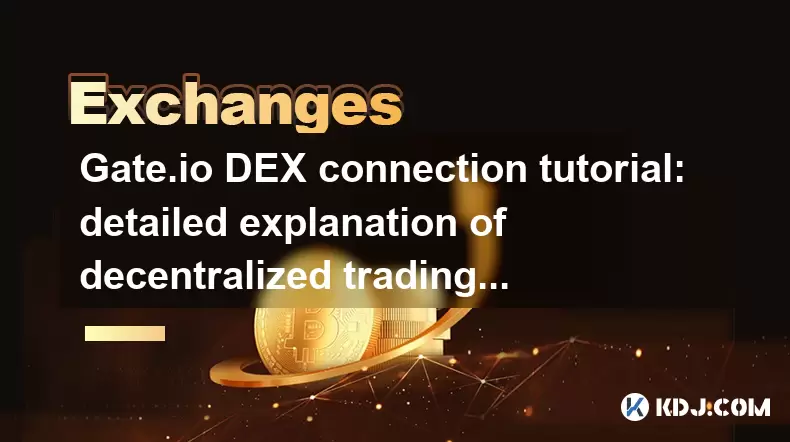
Gate.io DEX connection tutorial: detailed explanation of decentralized trading operation steps
Jun 12,2025 at 08:04pm
Connecting to Gate.io DEX: Understanding the BasicsBefore diving into the operational steps, it is crucial to understand what Gate.io DEX is and how it differs from centralized exchanges. Unlike traditional platforms where a central authority manages user funds and trades, Gate.io DEX operates on blockchain technology, allowing users to trade directly f...
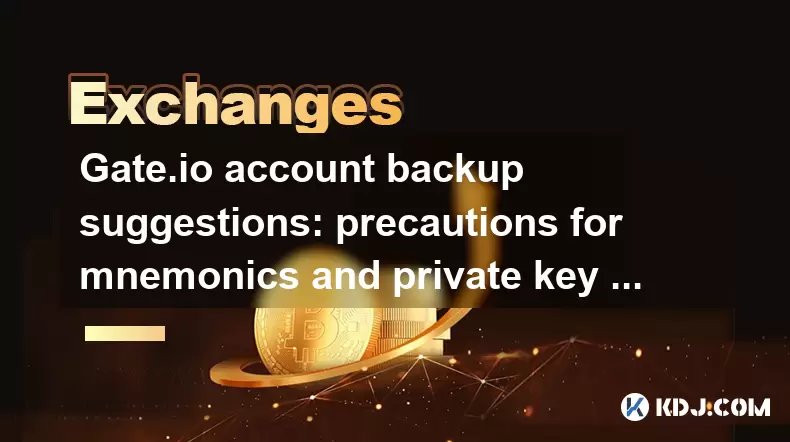
Gate.io account backup suggestions: precautions for mnemonics and private key storage
Jun 12,2025 at 10:56am
Understanding the Importance of Mnemonics and Private KeysIn the world of cryptocurrency, mnemonics and private keys are the core elements that grant users ownership over their digital assets. When using Gate.io or any other crypto exchange, understanding how to securely manage these components is crucial. A mnemonic phrase typically consists of 12 or 2...
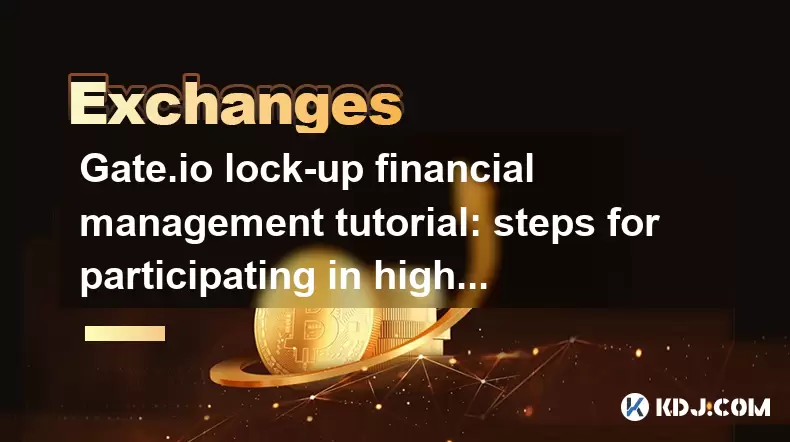
Gate.io lock-up financial management tutorial: steps for participating in high-yield projects and redemption
Jun 13,2025 at 12:43am
What Is Gate.io Lock-Up Financial Management?Gate.io is one of the world’s leading cryptocurrency exchanges, offering users a variety of financial products. Lock-up financial management refers to a type of investment product where users deposit their digital assets for a fixed period in exchange for interest or yield. These products are designed to prov...
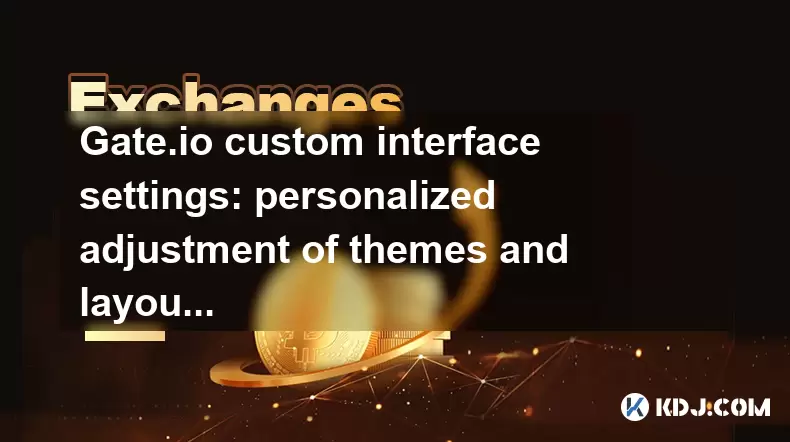
Gate.io custom interface settings: personalized adjustment of themes and layouts
Jun 13,2025 at 03:22am
Introduction to Gate.io Interface CustomizationGate.io is one of the leading cryptocurrency exchanges in the world, offering users a wide range of trading tools and features. Among these, custom interface settings play a crucial role in enhancing user experience by allowing traders to personalize their dashboard according to individual preferences. Whet...
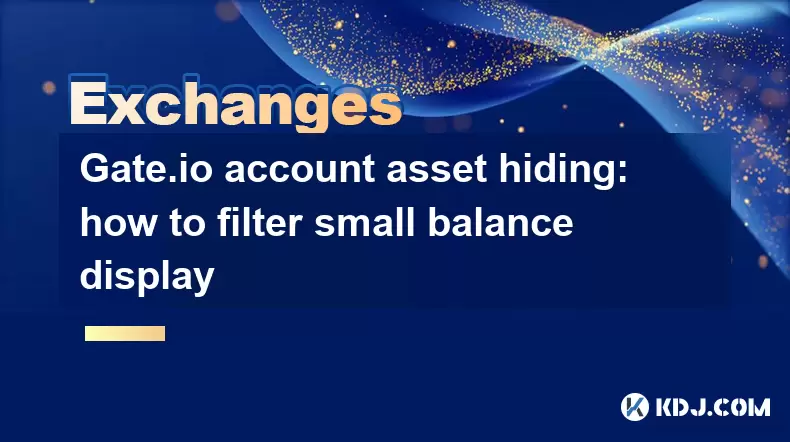
Gate.io account asset hiding: how to filter small balance display
Jun 12,2025 at 04:42pm
What Is Asset Hiding on Gate.io?Gate.io is a popular cryptocurrency exchange platform that offers a wide range of features to enhance user experience, including the asset hiding function. This feature allows users to hide small balances or specific cryptocurrencies from their account dashboard. The main purpose of asset hiding is to declutter the interf...
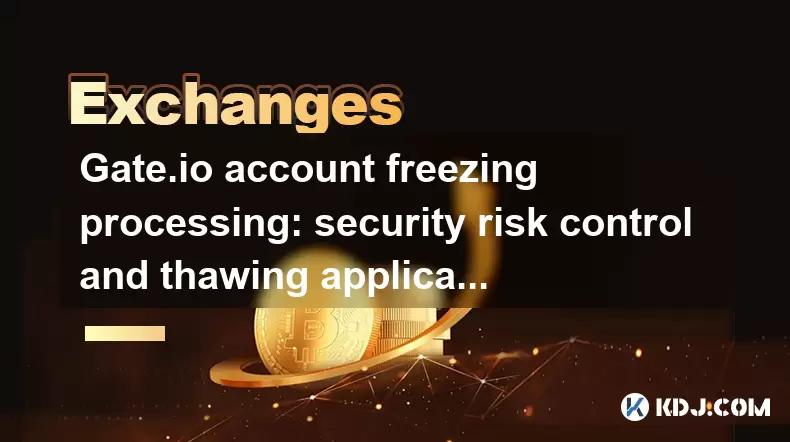
Gate.io account freezing processing: security risk control and thawing application steps
Jun 12,2025 at 10:21pm
Understanding Gate.io Account Freezing: Causes and ImplicationsGate.io is a well-known global cryptocurrency exchange platform. Account freezing is one of the security measures it employs to protect users' assets from unauthorized access or suspicious activities. When an account gets frozen, the user will be restricted from performing certain operations...

Gate.io DEX connection tutorial: detailed explanation of decentralized trading operation steps
Jun 12,2025 at 08:04pm
Connecting to Gate.io DEX: Understanding the BasicsBefore diving into the operational steps, it is crucial to understand what Gate.io DEX is and how it differs from centralized exchanges. Unlike traditional platforms where a central authority manages user funds and trades, Gate.io DEX operates on blockchain technology, allowing users to trade directly f...

Gate.io account backup suggestions: precautions for mnemonics and private key storage
Jun 12,2025 at 10:56am
Understanding the Importance of Mnemonics and Private KeysIn the world of cryptocurrency, mnemonics and private keys are the core elements that grant users ownership over their digital assets. When using Gate.io or any other crypto exchange, understanding how to securely manage these components is crucial. A mnemonic phrase typically consists of 12 or 2...

Gate.io lock-up financial management tutorial: steps for participating in high-yield projects and redemption
Jun 13,2025 at 12:43am
What Is Gate.io Lock-Up Financial Management?Gate.io is one of the world’s leading cryptocurrency exchanges, offering users a variety of financial products. Lock-up financial management refers to a type of investment product where users deposit their digital assets for a fixed period in exchange for interest or yield. These products are designed to prov...

Gate.io custom interface settings: personalized adjustment of themes and layouts
Jun 13,2025 at 03:22am
Introduction to Gate.io Interface CustomizationGate.io is one of the leading cryptocurrency exchanges in the world, offering users a wide range of trading tools and features. Among these, custom interface settings play a crucial role in enhancing user experience by allowing traders to personalize their dashboard according to individual preferences. Whet...

Gate.io account asset hiding: how to filter small balance display
Jun 12,2025 at 04:42pm
What Is Asset Hiding on Gate.io?Gate.io is a popular cryptocurrency exchange platform that offers a wide range of features to enhance user experience, including the asset hiding function. This feature allows users to hide small balances or specific cryptocurrencies from their account dashboard. The main purpose of asset hiding is to declutter the interf...

Gate.io account freezing processing: security risk control and thawing application steps
Jun 12,2025 at 10:21pm
Understanding Gate.io Account Freezing: Causes and ImplicationsGate.io is a well-known global cryptocurrency exchange platform. Account freezing is one of the security measures it employs to protect users' assets from unauthorized access or suspicious activities. When an account gets frozen, the user will be restricted from performing certain operations...
See all articles

























































































